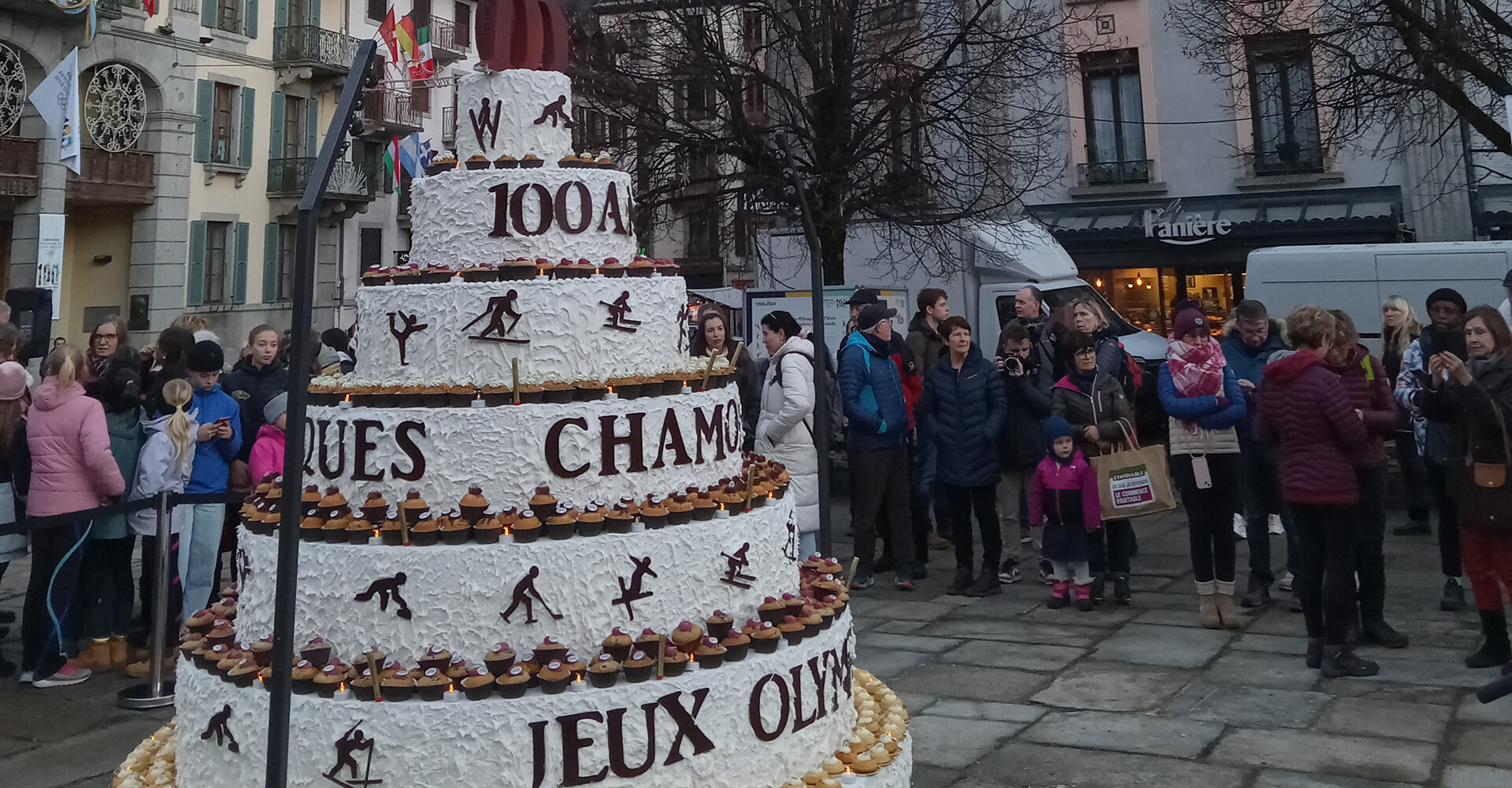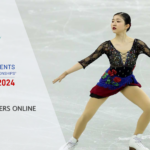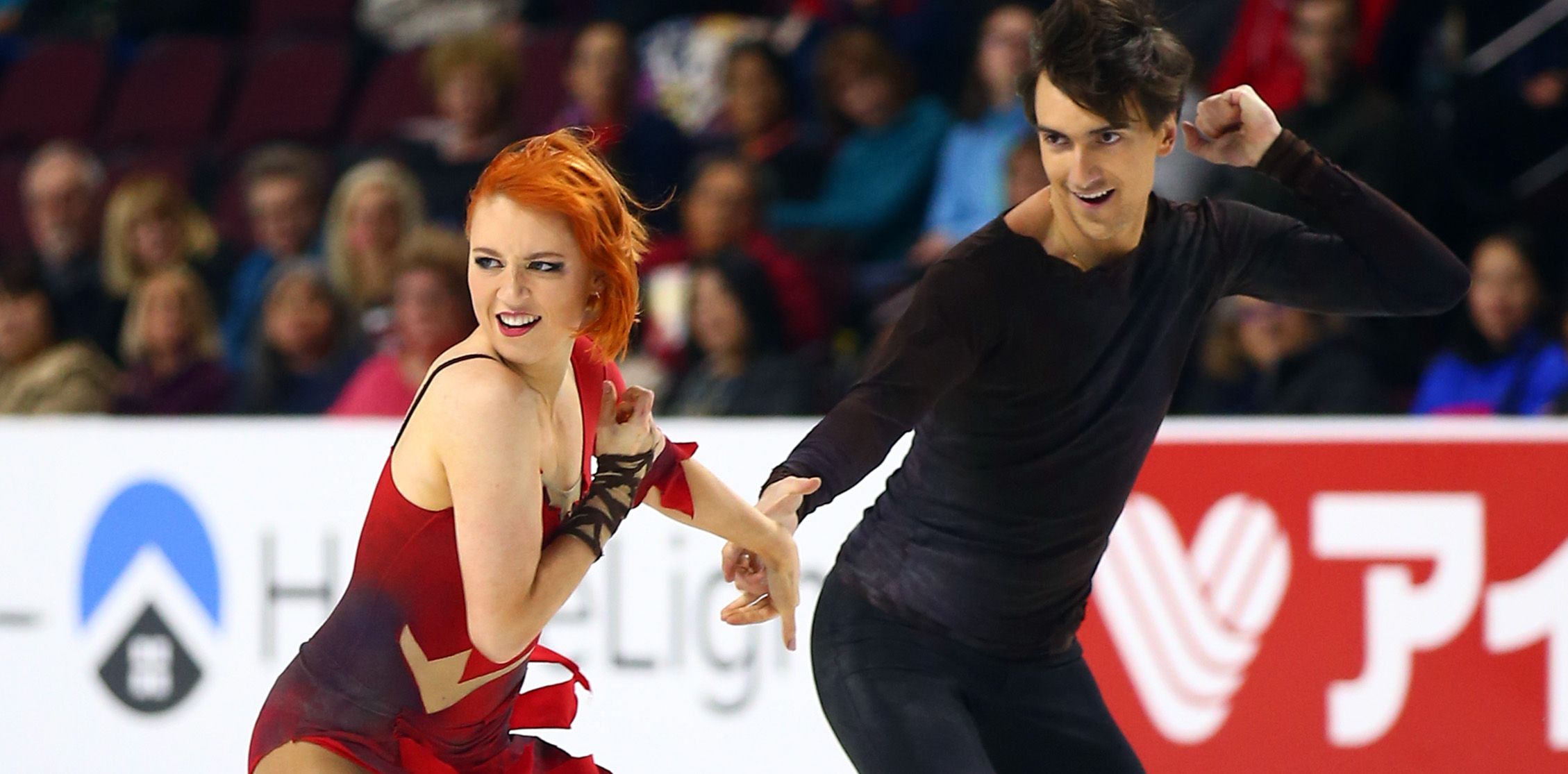By Scott Mammoser, Team FSO contributing writer
Photos by Scott Mammoser
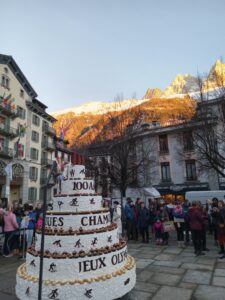 CHAMONIX, France – There was a layered birthday cake and celebrations in the French Alps on January 25. However, it wasn’t a person being honored, but rather an event. It was 100 years ago on that date when the opening ceremony for the inaugural Winter Olympic Games took place in 1924.
CHAMONIX, France – There was a layered birthday cake and celebrations in the French Alps on January 25. However, it wasn’t a person being honored, but rather an event. It was 100 years ago on that date when the opening ceremony for the inaugural Winter Olympic Games took place in 1924.
A century ago, 16 nations marched through the center of town from the city hall to the Olympic Stadium, which at the time was a mammoth structure. An estimated 10,000 spectators and 200 journalists also journeyed on the revolutionary train system from Paris to observe sports that were primarily still in their infancies.] 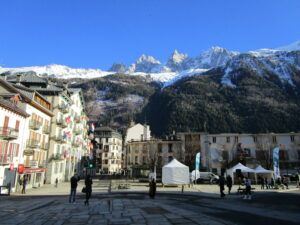
Fast forward to 2024, and there was a magical feel though the air on the anniversary. Singers performed 1920s tunes, while dancers wore costumes of the era. Locals brought antique skiing equipment, as cake was distributed in front of the city hall. French officials made speeches, and there were also banners commemorating the ensuing 24 editions of the Winter Games, with lists of regional French athletes and their finishes. More celebrations are expected throughout the year, including a visit from the Olympic Flame en route to Paris for July’s Summer Games.
While the permanent population of Chamonix is merely 9,000, it remains a popular tourist destination for skiing in the winter and hiking in the summer, with Europe’s tallest peak – Mont Blanc – rising from the horizon. It is easily reached on a one-hour bus ride from Geneva, Switzerland, and the buses leave continuously throughout the day.
Travelers looking for the original Olympic Stadium will see a near replica situated a stone throw away. A race track and basketball courts take the place of the speedskating oval and skating rink, but it still boasts the same look with the mountains in the background. Remains of the original bobsled course can be found in the forest, and there is a museum with plenty of original mementos.
Figure Skating at the 1924 Chamonix Games
Men’s Medalists
Gold: Gillis Grafström (SWE)
Silver: Willy Böckl (AUT)
Bronze: Georges Gautschi (SUI)
Women’s Medalists
Gold: Herma Szabo Planck (AUT)
Silver: Beatrix Loughran (USA)
Bronze: Ethel Muckelt (GBR)
Pairs Medalists
Gold: Helene Engelmann and Alfred Berger (AUT)
Silver: Ludowika Jakobsson and Walter Jakobsson (FIN)
Bronze: Andree Joly and Pierre Brunet (FRA)
In total, athletes from 11 nations competed in figure skating, with the most coming from Great Britain. At 11 years old, Sonja Henie placed eighth and in last position for the women’s event. The experience would pay off for the Norwegian as she would go on to win the next three Olympic gold medals in 1928, 1932 and 1936, plus 10-consecutive World Championships from 1927 to 1936. Szabo Planck trails her in the record books with five-straight World titles from 1922 to 1926, plus two coming in pairs. Grafström was already an Olympic champion when figure skating took place at the 1920 Antwerp Summer Games. He added a gold medal at St. Moritz in 1928 and a silver at Lake Placid 1932.
Grenoble and Albertville
Chamonix is one of three Winter Olympic host cities in Eastern France, with the others being Grenoble in 1968 and Albertville in 1992. All three are situated on a straight route, which would take about two to three hours to drive in a car. A mountain range divides Albertville from Chamonix, so buses and trains need to go around the range, making for a much longer trip. The stands of Albertville’s La Hall de Glace Olympique, where Kristi Yamaguchi won her gold medal, are removed, but public skating is still popular on the ice. There is a museum located in the arena, as well. On the negative side, while Grenoble’s Palais des Sports is still in use for events, the surrounding Paul Mistral Park is plagued with graffiti and decay. The cauldrons of both the 1968 and 1992 Games are visible to the public in their respective cities.
Lausanne Olympic Museum
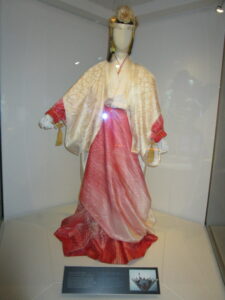
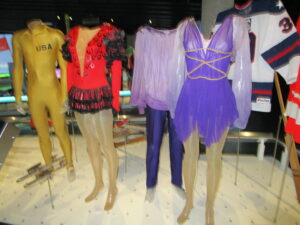 Another can’t miss for fans is the Olympic Museum in Lausanne, Switzerland, a short walk down the road from the IOC Headquarters and an hour train ride from Geneva. Figure skating artifacts one can view there include Katarina Witt’s “Carmen” costume from Calgary 1988, Aljona Savchenko’s skates from PyeongChang 2018 and the ensembles Jayne Torvill and Christopher Dean wore in Sarajevo 1984. Even Americans Maia and Alex Shibutani have attire on display. The outfit 1989 world champion Midori Ito wore when she lit the cauldron at the 1998 Nagano opening ceremonies is also highlighted.
Another can’t miss for fans is the Olympic Museum in Lausanne, Switzerland, a short walk down the road from the IOC Headquarters and an hour train ride from Geneva. Figure skating artifacts one can view there include Katarina Witt’s “Carmen” costume from Calgary 1988, Aljona Savchenko’s skates from PyeongChang 2018 and the ensembles Jayne Torvill and Christopher Dean wore in Sarajevo 1984. Even Americans Maia and Alex Shibutani have attire on display. The outfit 1989 world champion Midori Ito wore when she lit the cauldron at the 1998 Nagano opening ceremonies is also highlighted.


